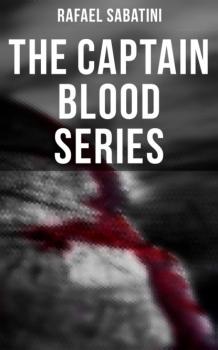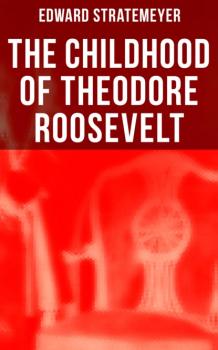Bookwire
Все книги издательства BookwireEuphorion (Studies of the Antique and the Mediaeval in the Renaissance)
This 2-volume book is one of the best-known works by the British author Violet Paget that features the studies of the antique and the mediaeval in the Renaissance, symbolically named Euphorion after the marvelous child born of the mystic marriage of Faust and Helena from Goethe's drama. Contents: Introduction The Sacrifice The Italy of the Elizabethan Dramatists The Outdoor Poetry Symmetria Prisca The Portrait Art The School of Boiardo Mediaeval Love Epilogue
The Captain Blood Series
Dr. Peter Blood is a sharp-witted Irish physician who had had a wide-ranging career as a soldier and sailor (including a commission as a captain under the Dutch admiral De Ruyter) before settling down to practice medicine in the town of Bridgwater in Somerset. Dr. Blood involuntary gets involved in the Monmouth Rebellion while the town prepares to fight for James Scott, 1st Duke of Monmouth. He wants no part in the rebellion, but while attending to some of the rebels wounded at the Battle of Sedgemoor, Peter is arrested and convicted of treason. The sentence is death by hanging, but King James II, for purely financial reasons, has the sentence for rebels commuted to transportation to the Caribbean, where they are to be sold into slavery. When a Spanish force attacks and raids the town of Bridgetown, Blood escapes with a number of other convict-slaves, captures the Spaniards' ship and sails away to become one of the most successful pirates in the Caribbean, hated and feared by the Spanish and always sparing English ships. Colonel Bishop, humiliated by Blood's escape and by Blood himself, devotes himself to capturing Blood with the hope of hanging him. Table of Contents: Captain Blood Captain Blood Returns The Fortunes of Captain Blood
Charlotte Löwensköld (Musaicum Must Classics)
Charlotte Löwensköld is a beautiful, educated woman. She ignores her husband and daughters in favor of her son Karl-Arthur, for whom she has enormous hopes. Charlotte expected him to become a successful man, but when he left home for studies in Uppsala everything changed.
The Ladies Lindores (Romance Classic)
"The Ladies Lindores" is a historical novel by Mrs. Oliphant. Extract: "It was not, however, with any sound of wheels, triumphal or otherwise, that young Erskine approached his father's house. It was all new and strange to him; the hills—the broad and wealthy carses through which he had passed—the noble Firth, half sea half river, which he had crossed over in his way—all appeared to him like landscapes in a dream, places he had seen before, though he could not tell how or when. It was afternoon when he reached Dunearn, which was the nearest place of any importance. He had chosen to stop there instead of at the little country station a few miles farther on, which was proper for Dalrulzian. This caprice had moved him, much in the same way as a prince had sometimes been moved to wander about incognito, and glean the opinions of his public as to his own character and proceedings."
The House on the Moor (Vol. 1-3)
"The House on the Moor" is a novel by Mrs. Oliphant first published in 1861. Extract: "Behind him, hung by the side of the window, in the worst light of the room, is a portrait, a very common work, done by a mediocre painter, but in all probability very like its original, for the face looks down through the gloom with a real smile, which paint cannot give—a sweet, home-like, domestic woman, such another as Susan will be when the years and the hours have carried her into her own life. There can be no doubt it is Susan's mother and this man's wife. There is no other picture in the house, and he cares so little for anyone seeing this, that he has hung it in the shadows of the red moreen curtains, where nobody can distinguish the features. Most likely he knows the features well enough to penetrate that darkness; for though he sits with his back to it most usually, it is for his pleasure it is here."
Trail Smoke (Musaicum Vintage Western)
Buck Surratt rode a long way through the desert in order to get to the Morgantown where hoped to find a job. Night before he will arrive into the town he spends the night on the ridge near the road, when he hears a gun shot from the nearby canyon to which he doesn't pay too much attention. However, as he enters the Morgantown next day looking for a job, Buck ends up being interrogated by the town officials about the mysterious shot. Unwilling to share details of his past the stranger becomes a suspect and make as many enemies as friends in a new town.
The Childhood of Theodore Roosevelt
Edward L. Stratemeyer (1862-1930) was an American publisher and writer of children's fiction. He was one of the most prolific writers in the world, and a founder of the Stratemeyer Literary Syndicate, where he hired journalists to write stories based on his ideas. Stratemeyer created many well-known fictional book series for juveniles, including The Rover Boys, The Hardy Boys, and Nancy Drew series. Excerpt: "The life of Theodore Roosevelt is one well worth studying by any American boy who wishes to make something of himself and mount high on the ladder of success. The twenty-sixth President of our country is a fine type of the true American of to-day, full of vim and vigor, quick to comprehend, and equally quick to act, not afraid to defend his opinions against all comers when satisfied that he is in the right, independent, and yet not lacking in fine social qualities, physically and morally courageous, and with a faith in himself and his God that is bound to make for good so long as he clings to it."
The Wedding Chest Mystery (Musaicum Vintage Mysteries)
A gift of an ornate Chinese chest ends up becoming the coffin of the receiver. Who killed him? And, why was his body put inside the same chest that was supposed to be exhibited in a party? Chief Inspector Pointer must solve the clues to this locked-room mystery and find the killer before it's too late! Excerpt: "Mr.Farrant to see you, sir, Very urgent.Mr. William Farrant." The private inquiry agent smoothed his forehead and nodded as he glanced at a calendar of social events which his clerk prepared for him daily. A moment later a young man was shown in. He was of big build, but moved with a step so noiseless that even now, when he came forward and shook Schofild's outstretched hand, no footfall could be heard, and the room had parquet flooring."
The Charteris Mystery (Musaicum Vintage Mysteries)
Rose Charteris' dead body at the bottom of a sand pit let the onlookers believe that probably she died due to a freak accident… But Chief Inspector Pointer is deeply suspicious as there are many people who will directly benefit from her murder! Excerpt: "Cockburn thought that the colonel looked vexed. An old scar on his forehead blazed a bar of crimson. A sign of anger. Yet he could hardly be annoyed with the girls for knowing where the professor was. But already the colonel had puzzled him on the courts. Generally a fine player—to-day! Cockburn eyed him as he cut a cigar unevenly, and decided that something was up. It was not Colonel Scarlett's habit to chip a Corona like that. Nor to hold it so tightly that it leaked. Nor to smoke it at a pace which would turn it into an overheated cabbage stalk."
The Edda (Norse Mythology)
The Edda is a thoroughly researched study on the Norse mythology through the analysis of an Old Norse work of literature written in Iceland during the early 13th century. Edda is considered the fullest and most detailed source for modern knowledge of Norse mythology. Scholarly approach and conducted research have allowed the author to determine the age of the different versions of various myths.









